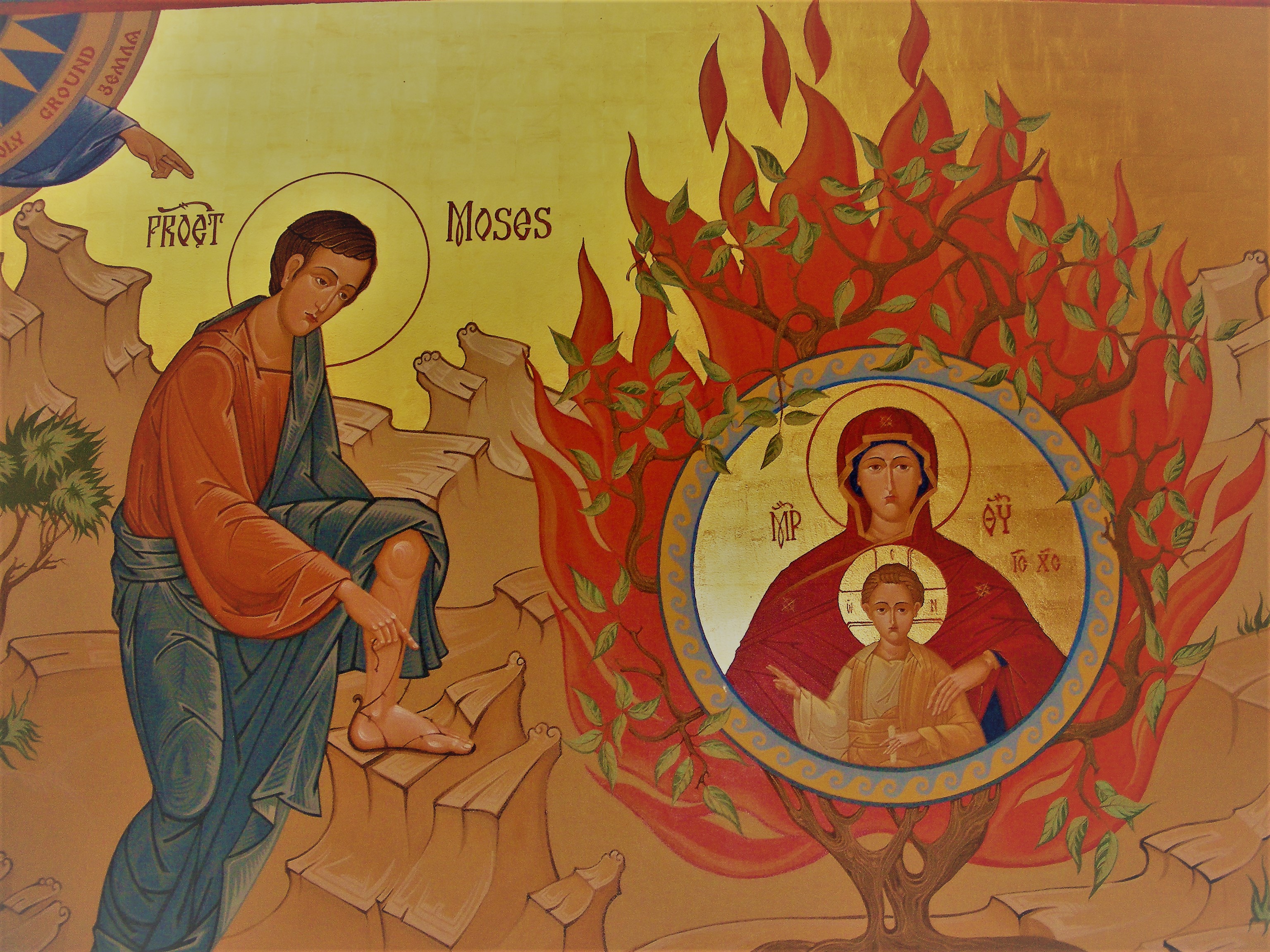by Brent Kostyniuk
In you, O Full of Grace, all creation rejoices: the angelic ranks and all the human race. Sanctified temple and spiritual paradise, virgins’ pride and boast, from whom God is made flesh and became a little Child; and He Who is our God before the ages, He made your womb a throne, and He made it wider than all the heavens. In you, O Full of Grace, all creation rejoices. Glory be to you. (Irmos of the Divine Liturgy of St. Basil the Great)
Whether your Christian heritage is from the West or the East, there are common elements about how we all celebrate Christmas. Central, of course, is the image of the Christ Child. In the West, homes and churches will be decorated with a Nativity scene, complete with stable, manger, wise men and shepherds, all gathered around Jesus, Mary, and Joseph.
In the East
In the East, the Nativity icon will be given a place of honour. The Virgin Mother is shown half-sitting, supported by a hammock-type bed used by the early Jews in their travels. All creation is called to the birth. In the icon, we see an angel announcing the event to two shepherds. As well, three angels attend the birth, while a donkey and ox look on. Striking is the absence of the usual sufferings of childbirth, an indication of the virgin birth of Christ.
However, I would like to suggest a much different image for Christmas—the Icon of the Unburned Bush. In one of its many forms, this icon depicts the Prophet Moses unstrapping his sandals as he approaches the burning bush on Mount Horeb. Within the bush there is an image of Mary holding the Christ Child. In Exodus 3:2, we read that Moses approached the bush and discovered it was on fire. However, the flames did not consume it.
Tradition stemming from the early Church Fathers and the first Ecumenical Councils teaches us that the flame Moses saw was in fact God’s uncreated energies or glory in the form of light, which is why the bush was not consumed. This can be compared with the light the Apostles witnessed at the Transfiguration. On Mount Horeb, God allowed Moses to see His eternal glory. When God spoke to Moses, Moses heard the pre-Incarnate Word, or Logos, of God.
For Eastern Christians, the miracle of the Unburned Bush is understood as a prefigurement of the virgin birth of Christ. Just as the bush was not harmed, neither was the Virgin. Just as the bush was “burned” by the uncreated energies of God without being consumed, so too was the Theotokos—the God-bearing one—consumed by that energy while remaining the same.
Virgin Before, During and After
For many Christians, the doctrine of the virgin birth is a difficult one to accept. We are told that the Theotokos is Ever-Virgin. She remained a virgin before, during, and eternally after the birth of Jesus Christ. This theology is an affirmation of who Christ Jesus is. Mary was chosen to be His mother, to conceive Him, to give flesh to Him, to give birth to Him. Through this, we understand His true human nature. We also come to give the Theotokos a special place among the saints because, uniquely, she is the finite dwelling place of the infinite God. In a sense, she is the new Holy of Holies, the new Temple where God resides.
This entire awesome reality is expressed beautifully in the following Theotokion, sung at the Divine Liturgy.
When Gabriel uttered to you, O Virgin, his “Rejoice!” at that sound the Master of all became flesh in you, the Holy Ark. As the just David said, you have become wider than the heavens carrying your Creator. Glory to Him Who dwelt in you! Glory to Him Who came forth from you! Glory to Him Who freed us through birth from you!
As with all icons, the Icon of the Unburned Bush is intended to instruct us, just as Holy Scripture instructs us. In it, we see the message of salvation, given to Moses and fulfilled in Jesus. We marvel at His plan. We learn of the power of God which makes all things possible, even the Incarnation.
A Blessing
Finally, thank you to all those who took the time to let me know this column is being read and, at least occasionally, enjoyed. I wish you and all the Prairie Messenger readers [and the Royal Doors readers] a very Merry Christmas, and a New Year that is blessed with that which is sufficient for your needs and a good measure of happiness. May you be blessed as you welcome the Christ Child into your homes and into your hearts.
This piece first appeared in The Prairie Messenger. Reprinted with permission.

